Continental Cranes

Cranes elsewhere in Europe
The Eurasian Crane is one of the most abundant of the fifteen crane species in the world with a total world population of more than 700,000 birds. Their breeding range is a wide band that stretches from North West Europe east through Russia, over the Ural mountains, through Mongolia, northern China and ends in eastern Siberia.
The Western European population is in excess of 600,000 and has been increasing for over thirty years, mainly as a result of changes in farming practice that have provided an abundance of food during the winter and along the cranes' migration routes. This has led to increased winter survival and improved condition of the birds on return to their breeding grounds. Cranes previously bred in western continental Europe, much like they did in the UK, but declines set in around the same time as they disappeared from the UK - 400 years ago. They no longer breed in Portugal, Italy or Spain, and had been absent as a breeding birds from France , Holland and the western half of Germany for a long period of time.
In recent years however, cranes have been returning to their former breeding areas with now over 400 pairs in the Lower Saxony region of Germany near the Dutch border, breeding in central France at Lac Du Der, and a handful of pairs in Holland. Find out more at - http://www.hetfochteloerveen.nl/
The Western flyway (migration route) for the continental cranes takes them in the Autumn from their breeding areas in Scandanavia and Eastern Europe in a south-westerly direction through Germany, France and finally to Spain. Along this route there are many important stop-over areas - often where cranes gather in spectacular numbers. Their destination in Spain is a sparsely populated area of oak woods, open arable farmland, pasture and wetlands close to the border with Portugal, where up to 220,000 birds now over-winter, their numbers having trebled in the last 20 years.
In a number of the staging-post sites along the migration route, the annual appearance of the cranes has lead to conservationists enhancing the crane feeding areas - often leading to spectacular numbers of cranes being visible, and tourist initiatives and industries springing up such as the "Festival de las Grullas" in Spain - http://www.festivaldelasgrullas.com
In some of the staging areas on route in Germany and France, rather than continuing on their westward path up to 50,000 birds now also "short stop" and over-winter. The number of weeks over which they can be seen has been greatly lengthened and in some parts has almost created a 'second tourist season' occurring during the crane's autumn and winter stay.
Below is a list of sites by country from NE to SW where cranes can often be encountered, a short description of the location, the times of year that they are there and an idea of the peak number of birds that may be present at any one time.
Much of this information is taken from a fantastic book - "Cranes - where, when and why?" - edited by Göran Lundin (details at base of page). The book contains much more detail of the key sites and acts a guide book for visitors with maps, hotel and accommodation information, and some interesting discussions on cranes as a resource and their relationships with conservationists and farmers. If you want to find out where to watch cranes on the continent - this book is a must! It was written around 15 years ago now, and the numbers of cranes likely to be encountered at some of the sites since this was published have changed dramatically.
Finland
Söderfjärden
An ancient meteorite crater that was formerly a bay on the Baltic coast, now drained and containing a vast flat area of arable land (sugar beet, rape, cereals and potatoes.) On the south-western (Baltic) coast of Finland. The most important stop over area for cranes in Finland in the autumn. August to October peak in late September, peak numbers approx 3,000 - 4,000.
Sweden
Kvismaren
An area of restored wetlands, surrounded by intensive arable agriculture in central southern Sweden.
Evening roosts of up to 10,000 cranes on the lakes in September/October. A smaller number cranes 500- 2,000 can also often be seen in spring. Find out more - http://www.kvismaren.org/en/node/13
Hornborgsajön
A 3,000ha lake in Southern Sweden that was restored in the mid 1990's following 150 years of attempts to drain it. It forms an important crane stop-over point one days flight from the Rugen-Bock region of Germany both in spring and autumn. Around 30 pairs of cranes also breed in the area.
Spring, first half of April peak of 18,500 in 2009. Late September is often also good with regularly at least 5,000 birds present.
You can look at daily counts of Cranes at Trandansen Naturum, Bjurum at the following link - http://www5.o.lst.se/projekt/hornborga/eng/crane_stat.asp
Tåkern
A vast shallow lake fringed by the largest reedbed in northern europe (15km2) located in southern Sweden to the east of Hornborgsajön. Cranes on migration in Spring and Autumn with approx 3,000 at both seasons. Breeding cranes now number around 20 pairs. Find out more - http://www.takern.se/tfhome.html
Kristianstadt
Wetlands and pastureland close to the city of Kristianstadt at the Southern tip of Sweden.
Cranes can be seen feeding in wet meadows and pasture particularly in the Spring, as well as at some supplementary feeding sites. 3000 - 5000 birds arrive in early April. Find out more - http://www.vattenriket.kristianstad.se/eng/index.shtml
Estonia
Matsalu
A 48,000ha National park on the Baltic coast with reedbeds, over 50 islands, forests and wet meadows and arable crops. Crane overnight roosts are widespread but principal roosts are on the Bay of Haapsalu and Bay of Matsalu.
Cranes arrive in the spring around the first week of April, with the breeding pairs turning up first. Approximately 6,000 pairs of cranes nest in Estonia. Peak autumn migration lasts from the second week of September till the second week of October with up to 16,000 birds present - but spread over a large area. Find out more - http://www.matsalu.ee/?id=739
Germany
Rϋgen-Bock region


The most important roost and staging post for cranes in central Europe with cranes from Scandanavia, Finland, and Poland gathering from the beginning of August prior to migration south in November.
Between 25,000 and 60,000 cranes have been recorded annually with peak in late October. Recent counts more around 40,000.
Spring migration peak in March with 5,000 - 10,000 cranes.
Home of the Crane Information Centre in Groβ Mohrdorf, 14km to the NW of Stralsund. The Crane Information Centre is run by Kranichschutz Deutschland (Crane Protection Germany).
The following link is good for recent counts from many of the locations mentioned in here and there is a great map:
http://www.kraniche.de/Start/Rastplaetze.shtml
Diepholzer Moorniederung


Spring migration peaks in mid March with 2,000 - 3,000 but by April most are passed through. A small number of pairs now breeding in the area and these remain.
Between 30,000 and 80,000 cranes can be seen on autumn migration with birds arriving from mid October and peaking in late October - to mid November. Cranes can remain into December if the weather is mild.
Find out more - http://www.bund-dhm.de/01_htm/200_kraniche.htm
Rhin-/Havelluch
Just to the North West of Berlin in Brandenburg State, and divided by the motorway between Hamburg and Berlin is an area of peat fenland dominated by with very large open fields separated by ditches. The area presents a mix of pasture, maize and other crops with shallow water pools and fish ponds - perfect for cranes on passage. Peak numbers are in late October and early November with around up to 80,000 at roost in some areas.
France
Lac du Der Chantecoq


Cranes arrive around mid October and it is thought that much of the migrating western population of cranes pass through the lake, stopping at least one night. Numbers can reach up to 60,000 at roost during November with some 1000's of birds remaining throughout the winter. Numbers in spring start to pick up as birds return on their easterly migration with up to 30,000 in early March.
Some great feeding and viewing areas have been created at the "Ferme aux Grues" -
http://champagne-ardenne.lpo.fr/English/e_grue_cendree.htm
This site also collates much of the crane information across Europe.
Landes de Gascogne
The region of the Landes de Gascogne is a large sandy plateau in the Aquitaine administrative region in South west France to the south of Bordeaux. Wintering cranes use many areas within this plateau but two sites are particularly good places to catch up with them - Arjuzanx, a 2,500ha site previous occupied by open cast mining, and Captieux -a military area of around 9,000ha dominated by very wet soils and pools within Molina grassland. The Lac de Pudarrieux is also growing in popularity where around 2 - 3,000 cranes can be encountered. The best time to see the cranes are from early January to end February where up to 20,000 birds can be present in the area.
More information on the Arjuzanx nature reserve can be found at http://www.reserve-arjuzanx.fr/
The Pyrenees


Have a look at the following website for more details: http://www.organbidexka.org/navigati.htm
Spain
Gallocanta
Just over the Pyrennees is Lake Gallocanta, the largest natural lake in the Spain - situated between Madrid and Barcelona, and surrounded by cereal fields and steppe.
The cranes are most spectacular at migration times in November and February, but there are often around 10 - 20,000 present throughout the winter.
More information on the area and the cranes can be found at: http://www.allucant.com
Extremadura
The end of the line for around half of the cranes that use the Western European flyway is Southwestern Spain. The habitats of importance to the cranes are the 'dehesa' - an open forest of holm and cork oaks covering about 40% of the area interspersed with areas of cattle grazing, a mix of cereals and irrigated crops such as rice and maize, and the presence of numerous artificial wetlands.
The cranes use a number of these small wetlands as their night time roosts and can be seen during the day feeding in the surrounding landscape.
Find out more - http://www.visit-western-spain.com/cubic/ap/cubic.php/doc/The-crane--Grus-grus--197.htm
References:
Lundin G. and authors. 2005: CRANES - where, when and why? Supplement 2005 no.43 of Vår Fågelvärld, Swedish Ornithological Society" ISBN 91-88124-32-0
You can order a copy either from the Kraniche-schutz Deutschland website -http://www.kraniche.de/Shop/Literatur.shtml or from the Natural History bookstore in the UK - http://www.nhbs.com

 Red White Yellow
Red White Yellow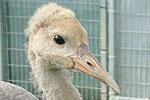 Red Blue Yellow
Red Blue Yellow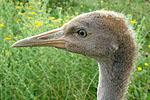 Red Green Yellow
Red Green Yellow Red Black Yellow
Red Black Yellow White Red Yellow
White Red Yellow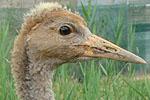 White Blue Yellow
White Blue Yellow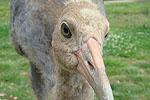 White Green Yellow
White Green Yellow White Green Yellow
White Green Yellow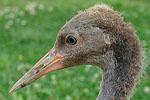 Blue White Yellow
Blue White Yellow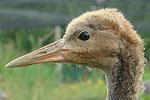 Blue Green Yellow
Blue Green Yellow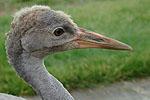 Blue Black Yellow
Blue Black Yellow Yellow Red Yellow
Yellow Red Yellow Yellow White Yellow
Yellow White Yellow Sven
Sven Yellow Green Yellow
Yellow Green Yellow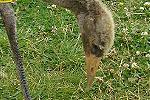 Yellow Black Yellow
Yellow Black Yellow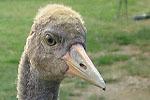 Green Red Yellow
Green Red Yellow Green White Yellow
Green White Yellow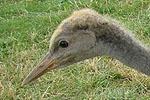 Green Black Yellow
Green Black Yellow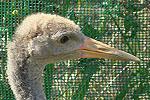 Frieden
Frieden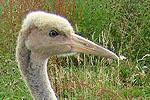 Black White Yellow
Black White Yellow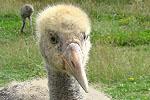 Black Green Yellow
Black Green Yellow